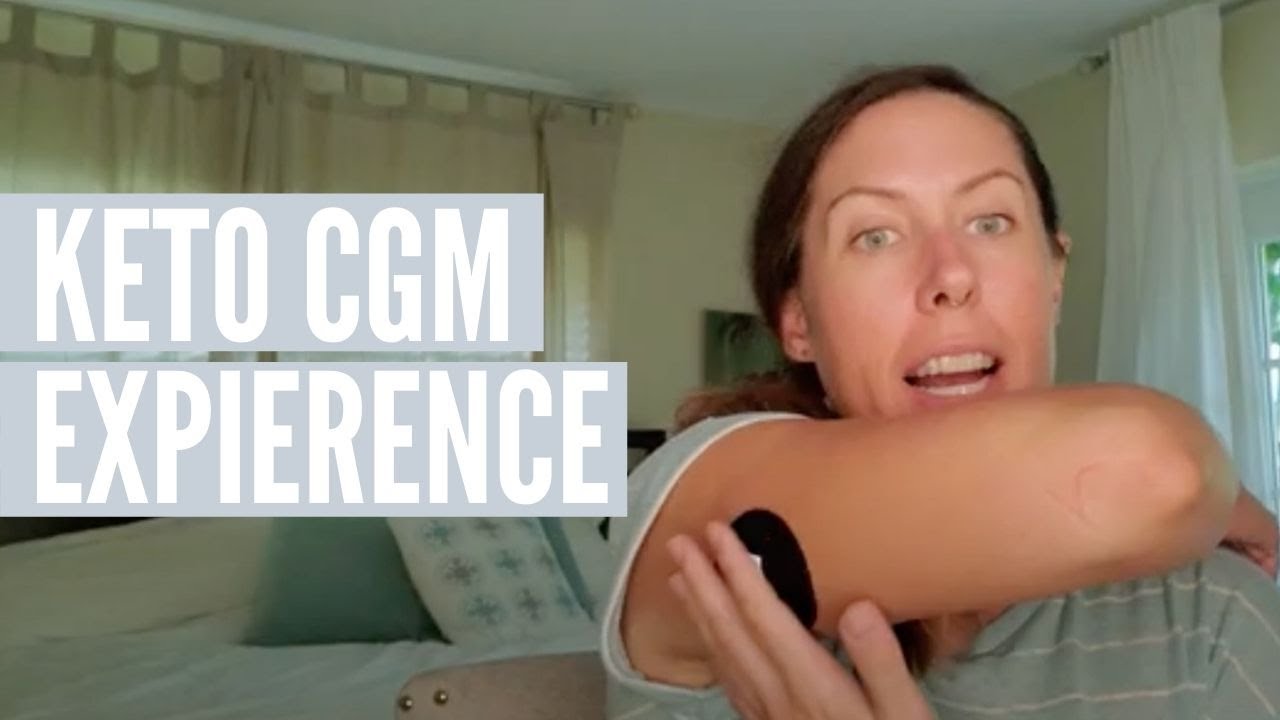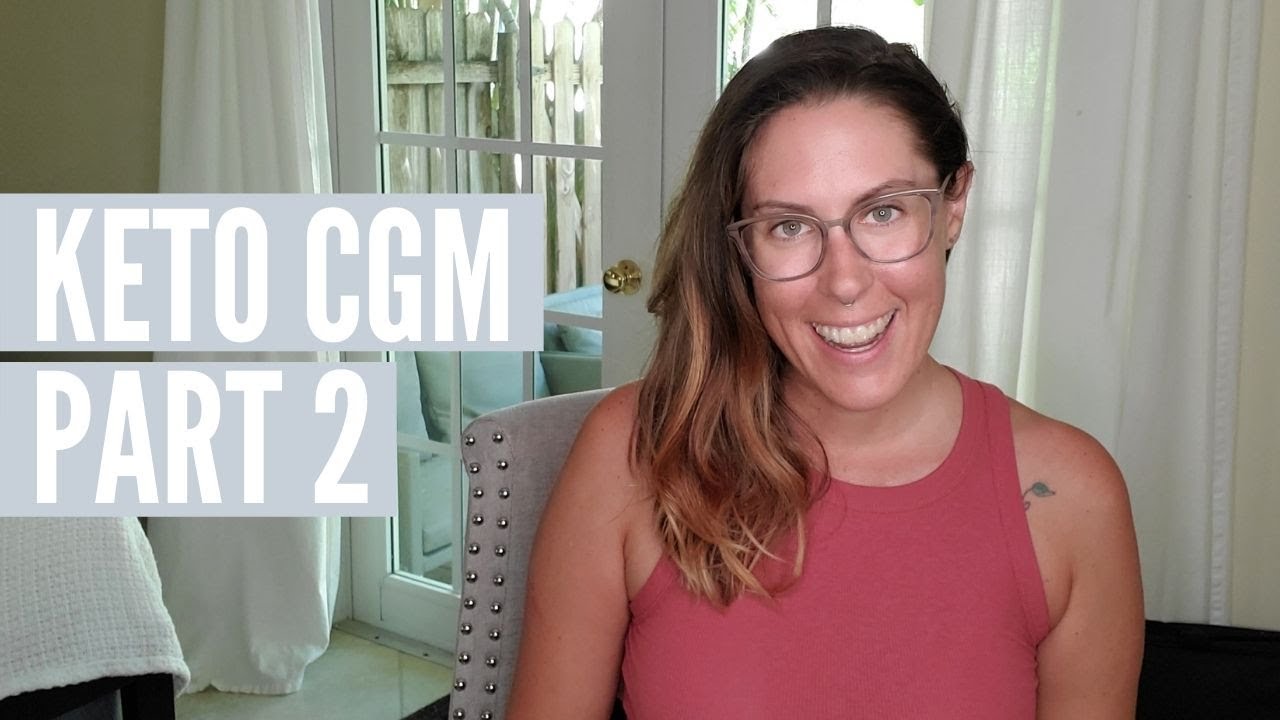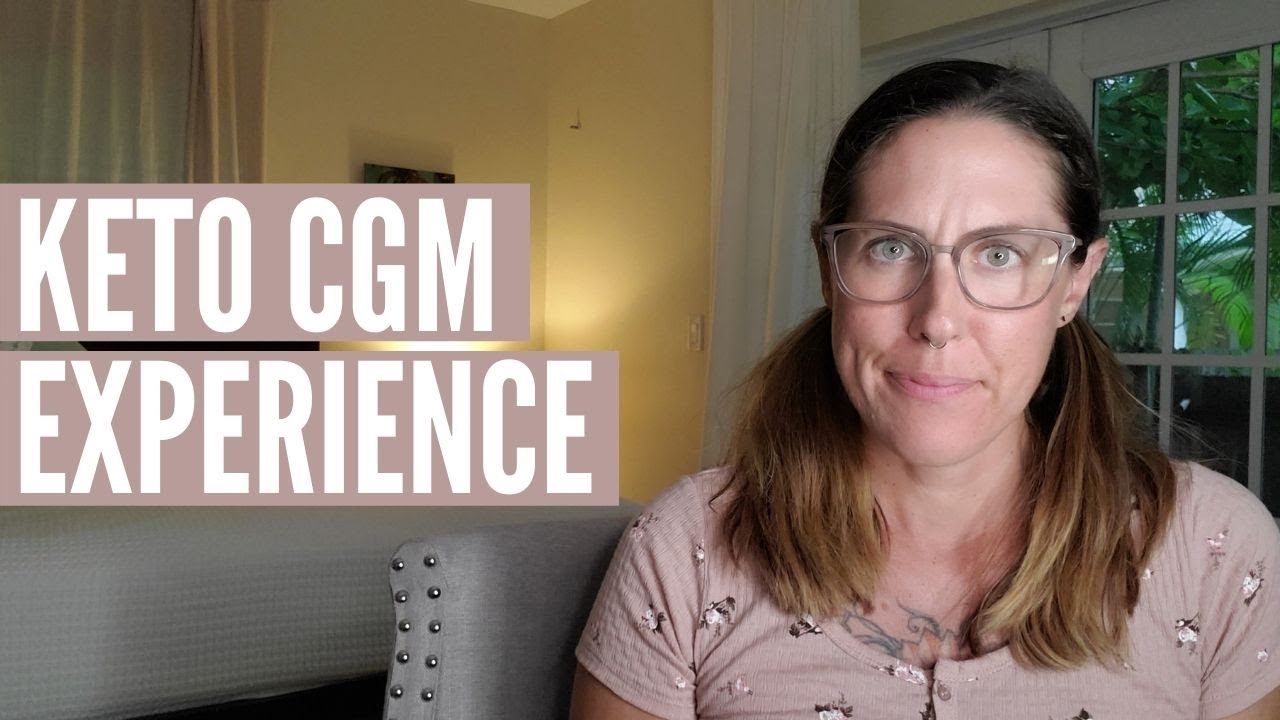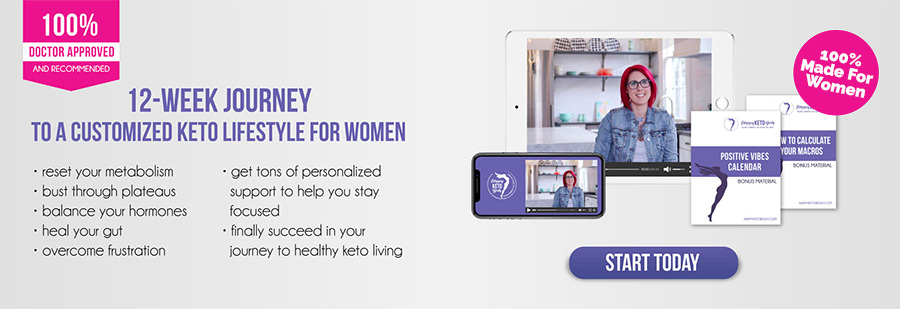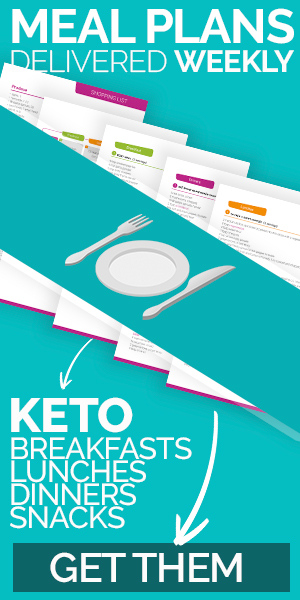I want...
Continuous Glucose Monitoring
November 8, 2020 By
Leanne Vogel

 June 27, 2021
June 27, 2021
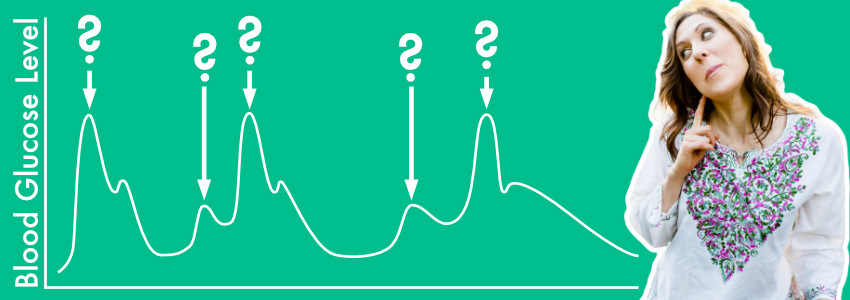
Continuous glucose monitoring might be a new concept for a lot of us because as keto folk, we are geared toward ketone monitoring as opposed to glucose monitoring as a sign of success on our keto diet. Everyone just forgets about glucose and the power it has!
Introduction | Glucose & Insulin | Bio Individuality | Glucose Testing | Glucose Tests Fail | Ketone Levels Tell Us About Our Insulin | Stress, Glucose, and Insulin | You Have CGM Data | Levers | Cortisol Affects Blood Sugar & Hunger | Your Unique Body | Get a CGM
Today’s blog post, focuses on:
- Which testing method is best: glucose and ketones OR ongoing levels
- The best time of day to test your glucose and, why this approach leaves holes in your wellness plan
- How your metabolism functions and why insulin is the bigger culprit to metabolic health or destruction
- How the metabolism works in relation to insulin, glucose, and your keto diet
- Signs of insulin resistance
- Stress and glucose, our evolutionary adaptation through time
- Using glucose as a marker for health to create metabolic flexibility long term
- Food order, and how this impacts your glucose level
- How certain foods/activities shift our metabolism
- The bio individuality of your ketogenic diet and, how this creates FREEDOM to your food and activity choices
If you’re not big into reading, all of this information can be accessed via listening to episode 279 of The Keto Diet Podcast. You can listen to this episode using the player below. Or, find The Keto Diet Podcast on your favorite podcast player and listen to episode 279 there.
This podcast episode and blog post was written before I’d worn a continuous glucose monitor by Levels for 28-days. If you want to see what I learned from wearing a continuous glucose monitor, these videos are a great start:
Introduction to continuous glucose monitoring (CGM)
Continuous glucose monitors are a fabulous little technology. It’s basically the size of a quarter and you stick it on the back of your arm. It’s a wearable device that monitors your glucose 24 hours day and sends that information to your smartphone.
A continuous glucose monitor (CGM) can track your glucose essentially in real time so you get this really granular data stream about how all aspects of diet and lifestyle are affecting your glucose levels.
This technology has been around for over a decade. And was initially and continues to be FDA approved for the management of type one and type two diabetes. This technology was a real game changer for people with diabetes because; as opposed to pricking your finger one or two or three or four times a day, with a continuous glucose monitor, you get to see how food impacts your glucose, all in real time, without the finger poking. This real time information help diabetics dose insulin properly.
With CGM, you’ve got this little sensor that’s on the back of the arm all the time. And gives you 10 times or more data points per 24 hours just automatically in the background without having to test.
Beyond diabetes management, I think a lot of people are really interested in having more objective information about what to eat and what foods are good for them personally. And, so many people have started to think, “Hey, this is a really interesting technology. Maybe this could actually be used for a wider population.”
People who are health seeking and don’t necessarily have a diagnosed metabolic disease can benefit from CGM – we will talk about the benefits in a second. Providing its users with rapid closed loop feedback on how food is affecting health and also how other lifestyle factors are affecting metabolism.
Understanding Glucose & Insulin
Glucose is a natural part to life, essential. As is insulin. But it’s when glucose is in excess through diet and lifestyle choices, that our bodies need for insulin increases, and the cells cannot keep up with the demand. We get more and more resistant to the effects of insulin and, as a result, end up with high glucose levels and cells resistant to insulins’ ability to shuttle the glucose out of the blood.
These repeated insulin surges – where there is too much glucose in the blood – are going to lead down the path of insulin resistance, which is the physiological path of how diabetes and prediabetes develop. These repeated insulin surges can cause us to become resistant to insulin and your glucose cannot compensate for the resistance.
When you have a big spike in glucose say, from consuming a food that doesn’t agree with your body, and you have that a big insulin release as a result, you can often have what’s called reactive hypoglycemia, which is that insulin essentially soaks all that glucose up into the cells, far too much than what was needed, leaving you feeling flat and unalive.
You can imagine, as we go through the day, unsure of what foods, activities and stressors are exacerbating the problem, our glucose level shoots up and down, up and down, which can lead to feelings of anxiety, an energy decline, and more hunger than before eating.
We don’t want these high highs and low lows. How do we minimize these spikes? By understanding what foods work for us, like, truly work for us. And, this is where CGM comes into play.
Levels has created a software that takes CGM raw glucose data and makes it highly actionable and insight driven so that people have the tools to understand their data stream and then take the steps to move it in the right direction.
The power of Bio Individuality
We know that not only food, but also how much we sleep, how we respond to stress and the exercise we’re doing, all of these things feed into our glucose levels every day.
CGM provides a way to track how all of these different lifestyle variables are affecting your health. And the cool thing about glucose is that it changes super rapidly in the bloodstream. It’s not a lagging indicator of what you’re doing. You can eat a handful of grapes and see your glucose shoot up in 15 minutes. You see this in real time. So, for the user, they’re able to say, for the first time: this specific food had this specific impact on my health. And I think people are really craving that type of objective information about their diet.
There are a lot of loud voices in the nutrition space and there’s a lot of confusion about what the right way to go is. Continuous glucose monitoring takes the guesswork out of it all. Objective data really cuts through the nutrition noise.
People respond very differently to the same carbohydrate source. There are biochemical differences between each individual based on how people respond to the same carbohydrate load.
You and I could both eat a banana and have completely different glucose responses. I could go up 5 points and, you could go up 50 points. Meaning, the banana could have very different physiologic effect on both of us. In one of us, it’s creating a much more elevated insulin rise and potentially blocking body fat oxidation. In the other, it is generating very little insulin rise and allow them to stay in a ketogenic state.
Having this granularity into how a particular food source is actually affecting your glucose levels is very helpful. Having an understanding of that biochemical individuality and how people respond very differently to the same carb source, goes against the standardized glycemic index scale that we have been shown for years and based many of our nutrition choices on as a collective.
With a continuous glucose monitor, we create a glycemic index for ourselves for each food, and figure out for our ourselves what works for us, individually.
Our work is moving CGM as a treatment device to being a wearable that empowers people to truly ask; and effectively answer, “How is this food affecting my health?”
Manual Fasting Glucose Testing Doesn’t Tell us the Whole Story
What’s the difference between a onetime point measurement (pricking your finger after a meal) versus getting a continuous data stream with the CGM?
The easiest place to start is with fasting glucose which is your glucose first thing in the morning after not having consumed any calories for eight hours prior.
A lot of people are checking their glucose first thing in the morning just to make sure that they’re in the normal range – see if it’s bouncing around much from day to day. And that can be very, very helpful. But the thing about fasting glucose is that the metric can stay fairly stable, even if you are kind of moving in the wrong direction on the metabolic spectrum.
The reason for that is because of insulin. With the CGM, one of the main things we use to put people in the category of whether they’re normal prediabetic or diabetic is fasting glucose. If your fasting glucose is less than 100 milligrams per deciliter, when you go to the doctor, then you’re considered “normal”. If you’re between 101 to 125, you’re considered “pre-diabetic”. And if you’re 126 milligrams per deciliter or above, you’re considered diabetic.
But what’s interesting is that, each time you elevate your glucose in your blood you are going to also cause your pancreas to release insulin. And the reason the body does this is because insulin floats around in the bloodstream and it’s a hormone that combine two cells, and basically tell the cells to take up that glucose.
You have a glucose spike, then you have an insulin spike, and then that allows the glucose to be shuttled into the cells. When you do that over and over again, your body is pumping out a ton of insulin and ultimately the cells become resistant to that insulin. So, to get the same amount of glucose into your cells, you have to produce more insulin.
This is problematic (hyperinsulinemic) because insulin has effects all over the body. But, that test at the doctor doesn’t tell us any of this.
When this high insulin state happens in different parts of the body, it can create all sorts of symptoms and problems. There are so many diseases and symptoms that are associated with insulin resistance and metabolic dysfunction. And, it can look like anything.
If you’re insulin resistant in the brain, it can look like dementia or fatigue or chronic pain.
If you’re insulin resistant in the ovaries, it can look like polycystic ovarian syndrome and infertility.
If you’re insulin resistant in the skin, it can look like your oil glands, sebaceous, gland, hyperplasia, and acne.
If you’re insulin resistant in the liver, it can look like nonalcoholic, fatty liver disease.
Having that high insulin can occur while your fasting glucose looks the same day over day.
For example, let’s say that your fasting glucose is 80 and your insulin is really low. You could also have a fasting glucose of 80 and insulin be really high to keep your glucose at the 80 level. When you test your fasting glucose, everything “checks out” but what’s happening with the insulin is a very different story. And, is a very clear indicator of your metabolic health.
In the case of monitoring fasting glucose, insulin is much more effective as an early marker for people who have some problem with their metabolism because it’s going to rise and you’re going to be hyperinsulinemic far before that fasting glucose actually starts to rise.
Once fasting glucose starts rising closer to 100 or into the 125 range of pre-diabetes, this means that your insulin has been high for so long that insulin resistance has already set in.
Long story short, fasting insulin isn’t a very granular way to tell if you’re metabolically healthy.
There are going to be years when fasting glucose will look pretty normal yet there can still be a problem (with the insulin).
Where Glucose Tests Fail
A one-point measurement (pinprick glucose testing) doesn’t give you a full picture of what’s happening metabolically for you.
If you’re pricking your finger after a meal, you might be catching the upswing of your glucose spike or the downstream swing of your glucose spike. You might be catching the peak, but it’s very difficult to know if you’re actually capturing both the peak glucose elevation after a meal, and also how long you’re staying elevated. All, important information to get a clear picture, and adjust as needed to support your metabolism.
People who are more insulin resistant, those who are starting to go down the path of metabolic dysfunction, their glucose is going to stay elevated for longer after a meal. They’re going to probably have a higher spike and, stay elevated for longer. Onetime glucose finger prick tests cannot map this out. The shape of that glucose curve after a meal is really quite predictive of your metabolic health overall. You want to see a very low peak after a meal and you want to come down really quickly. Essentially, what’s seen is a rolling hill affect as opposed to a mountain peak experience. You don’t want to see these huge mountains up and down with jagged peaks. This is the type of information that you can get with a continuous glucose monitor that you just can’t with the one-time prick test, unless you’re pricking your finger 20, 30, 40 times a day.
With CGM, you are able to track glucose throughout the day and see what’s happening after every meal and activity to provide you with the information you need to truly understand your body. You are seeing all of this with granularity at a 15-minute data interval so you can essentially build a little graph of the whole glucose spike and really, really have a clear picture of how you’re responding and, and that’s important.
How Ketone Levels Tell Us About Our Insulin
When a keto dieter brings ketone testing into the mix, it will tell them through the presence or lack of ketones, how much insulin is present. The more ketones, the less insulin. The less ketones, the more insulin because insulin blocks fat oxidation. This blocking happens because insulin is a signal to the body that there is lots of glucose around and fat isn’t needed for fuel.
The insulin molecularly stops fat from being burned.
If your fasting glucose is in the normal range AND you have a good level of ketones, that’s a good indicator that your insulin is low, you’re oxidizing fat, and all is well.
How Stress Impacts Glucose Level and Insulin Activity
Stress and glucose have a fascinating relationship and a history that is rooted in evolutionary adaptation. If you think back to the original sources of stress, the very physical stresses and threats that we had as humans a long, long time ago. The common example is being chased by a lion. This is the stress we were built for: acute stress where glucose is released to power up the muscles, and we flee from the tiger. Now, stress looks like text messages, emails, traffic jams, 60-hour work weeks…
When the body was stressed in the past, it had a physical challenge to overcome. Glucose was shuttled out, used, and that was it. Now, it’s an ongoing experience where glucose is shuttled out, not used, and this causes insulin to be needed more frequently.
When the stress hormone cortisol is released, glucose is released whether we’re experiencing a physical threat or a psychological stress. When the cortisol is released, it’s going to travel to our liver and tell the liver to dump out its stored glucose into the bloodstream to essentially raise the level of the blood glucose very quickly to feed all these muscles for whatever threat is coming, whatever stressor you have to fight.
We see a lot of people who use CGMs report that stressful situations like big meetings, intense conversations, even family issues, all can cause glucose elevation as monitored with their CGM.
We are building our product to be able to track objective measures of stress, similar to what is seen in the heart rate variability space, where we can create connections between stress and what’s happening in your body from a glucose level perspective.
So, You Have CGM Data… What Do You DO with It?
Turning around our metabolic health is about identifying the where, when, and what of our personal reactions. Once we know what we’re reacting to, the path to healing is laid out before us. The reactions are opportunities and, what comes next is the learning how to adjust things in the right direction. Simple as that.
In the case of working to avoid glucose spikes, as many of us women on keto are working to do, with CGM, we are given a collection of data that; for once and for all, tells us EXACTLY how our body reacts. No more waiting for someone/something else (the latest program, nutrition expert, etc.) to guess their way through our body.
By limiting the foods that you now know cause glucose to spike up, you
- Limit insulin requirements
- Increase insulin sensitivity
- Reduce inflammation
- Lower taxing processes on the body that affect aging (oxidative stress)
- Reduce glycation
The Levers You Can Play with When You Have CGM Data
Level pulls the raw data from your CGM into actionable steps and takeaways that you can use to shift your metabolic health and get a handle on your glucose levels. You will understand which foods spike you and, which foods keep you balanced.
Once you know what foods suit you best, we can play with what pairing foods with other foods does. Perhaps you react a little strongly to carrots. What happens if you add some coconut oil to them? Does that lessen the impact? What about having those coconut oil drenched carrots with a steak? How does this affect things?
With CGM, we’re able to care less about minimizing intake and more about pairing as a way to help us enjoy our favorites.
We know that adding fat and protein to carbohydrates typically does lower or blunt glucose spike. And, further: the order in which you pair your food has just as powerful an impact.
Putting your protein, fat and roughage foods before you eat your higher carbohydrate foods will lower the glucose spike. Adding cinnamon or vinegar, can also lower the impact, for example.
Food timing is another lever we can adjust that plays a very powerful role in how your body responds to food. Practices such as fasting can be very advantageous for overall metabolic health. By understanding your reaction to times of day, eating windows, and fasting windows, you can create an eating style that works well for you, your glucose levels, and insulin.
Another lever where your CGM data sheds light on is how your glucose level is affected the environment surrounding you while you eat. Eating while driving to your next meeting, during a heated conversation with your partner, or in shame right before bed when no one is looking could very well impact how your body; and glucose, responds.
If you’re stressed and you eat a certain carbohydrate, you might have a much bigger response than if you were to sit calmly practicing mindful eating, and eat the same carbohydrate. There have been studies looking at diabetic individuals who did mindful eating practices before their meals. And they had significantly different glycemic responses to the same carbohydrate depending on whether they were mindfully present during the meal, or scattered and stressed.
Exercise is another lever where CGM data can powerfully come into play. Studies show that the more you move, the better. Type matters less than how often you move. Whether you choose resistance training, flexibility, agility, low grade aerobic exercise, moderate or high intensity interval training, aerobic exercise… all have been shown to improve insulin sensitivity and be good for glucose levels. Something as simple as a 20-minute walk can decrease your glucose levels.
This study highlights exactly this, where researchers took three groups of people and separated into three groups. Group 1 went for a 60-minute walk once a day. Group 2, 20-minute walk before each meal. Group 3, walked for two minutes, every 30 minutes throughout the waking day, all three of those groups had lower 24-hour glucose levels than the group that didn’t exercise at all. However, group 3 saw the most changes in their blood glucose levels and, response to food throughout the day.
The last lever is sleep, which has a massive impact on glucose levels, and the spikes or rolling hill reactions when you consume certain foods. The difference between glucose management can be between 6 hours and 8 hours of sleep for our clients. And, when not well rested, fasting glucose is impacted, post-meal spikes are elevated, everything’s kind of off. And there has been tons and tons of research in this area about how sleep impacts metabolic health.
This study tracked six healthy young men, allowing them to sleep 4 hours for four nights. So, they slept continuously, but only for 4 hours. In only four days of sleep deprivation, they displayed prediabetic condition. They essentially turned them into prediabetics by just depriving their sleep for a very short amount of time. Of course, this was reversible once they put them back into normal sleep conditions. They things bounced back very quickly, but it is profound how much sleep deprivation can impact glucose.
How Cortisol Affects Blood Sugar & Hunger
We learned above that simply going from 7.5 to 6.5 hours a night has been shown to elevate glucose levels the next day. Why? One of the key mechanisms is that sleep deprivation increases cortisol levels.
And, like we talked about earlier, cortisol impacts glucose in the blood… and, it also affects our ghrelin and leptin levels.
Ghrelin and leptin are some of the hormones that tell us whether we’re hungry or satiated. Cortisol throwing off the balance of these two hunger hormones essentially makes us much hungrier and more likely to overeat and crave carbohydrates than what our body needs.
Cortisol also generates inflammation and inflammation has a very negative relationship with glucose.
We could go on and on about all of the inner workings of what causes what and why, but the major takeaway is quite simple… When you know what affects your glucose level (with a CGM monitor like Level) you can keep the spikes down by playing with the levers:
- Learning which food pairings keep your levels stable
- Understanding what food timing best suits your body and your life
- Moving your body frequently in whatever way brings you joy
- Creating a calming eating environment
- Getting adequate sleep
Level built all of these aspects into their software to help make the CGM data stream as actionable as possible.
Creating a Unique Plan, for Your Unique Body
There’s nothing worse than jumping on Instagram and learning you’re doing something wrong. A health advocate tells you the best time to fast is in the morning. Another says it’s best to fast in the evening after you’ve had a heavy load of carbohydrates. One touts starchy paleo-friendly carbohydrates and the other says fruits are best. What are you supposed to believe? What should you follow to hit your weight loss goals?
None of it.
Why? Because your body is your own. And, while the information on the internet is a great starting point – not many would argue that removing sugar from your diet is a great first step. Or, lowering your consumption of alcohol can only have positive effects on one’s weight loss efforts, finding a plan that works for you, all of you, is a one-person job and so, so, so unique to your needs.
Bio individuality can feel a little overwhelming. But, it doesn’t have to be. This is why I love the concept of a CGM program. Follow for 30 days, understand your body FAR more than you’d ever get in any program or guide. And then, apply the actions, and follow the plan that works best for your body, your blood glucose, your weight loss goals.
Using CGM is a very efficient way of figuring out the answers that no program or product has been able to provide, things that people have been trialing and erroring with for years using weight and feelings as a way of guessing through the adjustments. We haven’t had tools to close the loop on whether a food is a good food for us or, or if it’s potentially problematic for our metabolic function.
Understanding what’s standing in the way of proper metabolic function is very liberating. You don’t have to feel like another diet has failed you. Or, wonder why you’re gaining weight, or registering low ketones when you should be registering high. ALL of these answers, and more, are presented to you. This? Is freeing.
You learn which foods work for you and then you can kind of move on.
Hi! I'm Leanne (RHN FBCS)
a Functional Medicine Practitioner, host of the Healthful Pursuit Podcast, and best-selling author of The Keto Diet & Keto for Women. I want to live in a world where every woman has access to knowledge to better her health.
